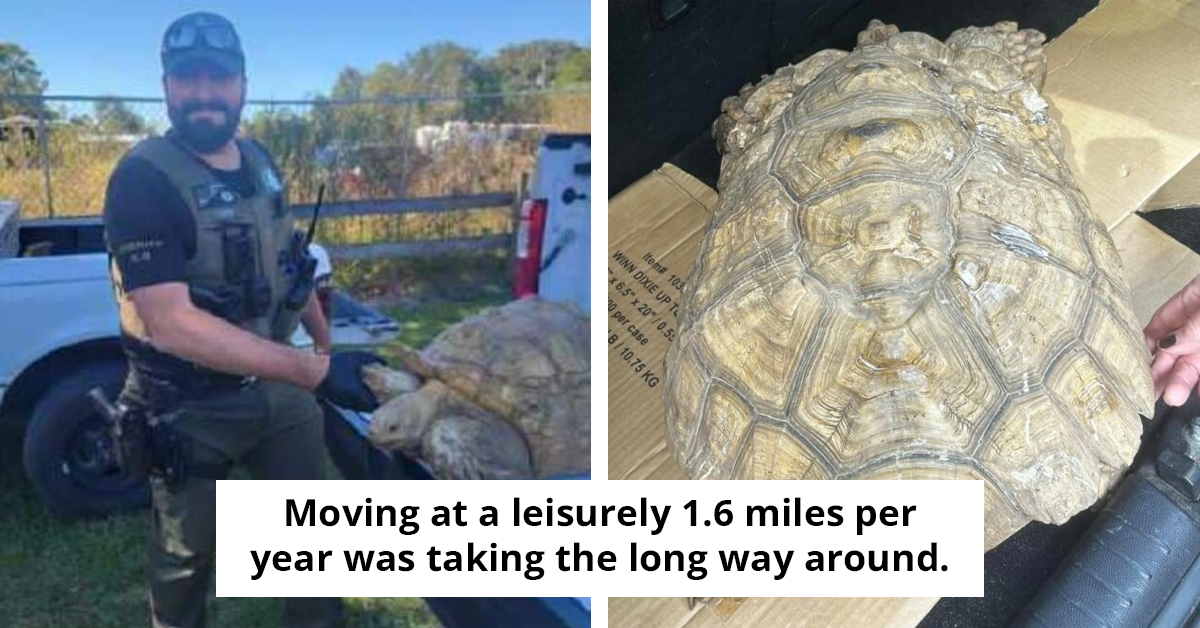The Extraordinary Journey Of Félicette, The First And Only Feline Astronaut
Recently, the world marked a remarkable milestone—the 60th anniversary of the first and only cat to venture into space. This historic event involved a small black-and-white Parisian stray named Félicette, who soared to an altitude of 154 km aboard a French rocket in October 1963.
Back in the early 1960s, space exploration was dominated by dogs and monkeys. Scientists used these animals to understand the perils of outer space and assess human survivability beyond Earth’s atmosphere.
While Russia sent dogs and the US preferred monkeys, France decided to chart its own course with cats. For this audacious endeavor, France’s space agency, Cerma (Centre d’Enseignement et de Recherches de Médecine Aéronautique), collected fourteen stray cats. To avoid forming emotional attachments, the scientists refrained from naming them, referring to the chosen cat as C341.
However, once news of C341’s space mission on the Veronique rocket broke, the French press felt this pioneering kitty deserved a name. Initially christened Felix after the famous cartoon character, it was soon discovered that C341 was a female. Thus, she was aptly renamed Félicette.
On October 18, 1963, Félicette’s rocket launched, making her the first cat in space. Her safe return to Earth solidified her status as a trailblazer in space exploration. France’s bold decision added a new species to the roster of animal astronauts, a list that has since expanded to include tortoises, jellyfish, and even garden spiders.
The 1960s were an era of intense scientific curiosity about the dangers of space travel. Most animal spaceflights aimed to determine whether the conditions of space—weightlessness, radiation, and other factors—posed life-threatening risks.
These missions paved the way for human space travel, proving that living beings could indeed survive the harsh environment beyond our planet.
Despite her pioneering journey, Félicette’s story took a tragic turn. Two months after her spaceflight, she was euthanized so scientists could study her body for any physiological effects of space travel.
The results were inconclusive, and no further cats were sent into space. Yet, Félicette’s legacy endures. In 2019, a statue of her was erected at the International Space University in Strasbourg, ensuring that the first cat in space will never be forgotten.
The story in detail

Félicette: The first and only cat astronaut
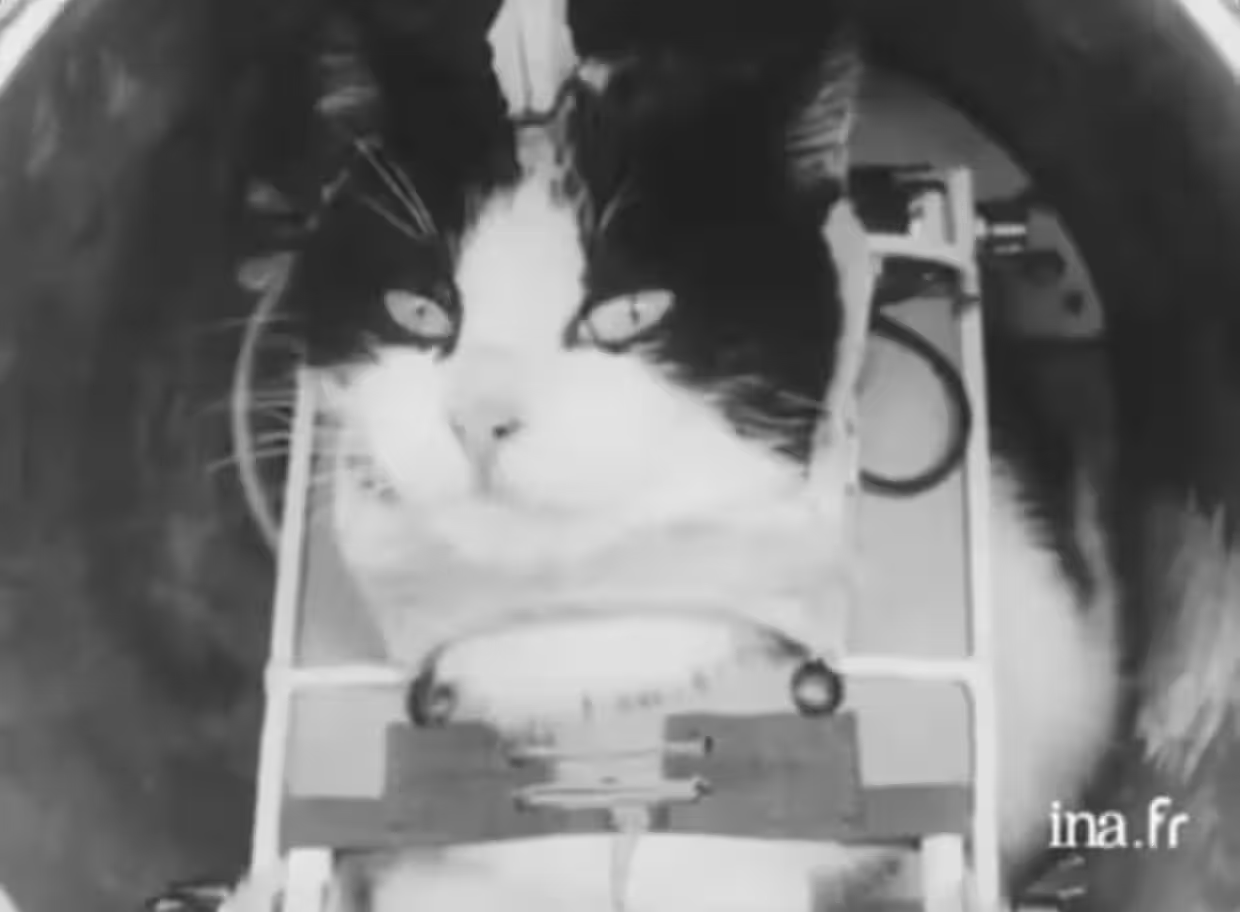
The Significance of Félicette's Journey
Félicette's story is a profound example of how animals have contributed to scientific advancements.
Dr. Samantha Rivers from UCLA points out that her journey not only highlights the role of animals in research but also reflects societal attitudes towards animals and their contributions.
Félicette's mission as the first feline astronaut symbolizes the intersection of science, ethics, and the emotional connections that people have with animals.
Félicette, pictured with the French space team after her return to Earth
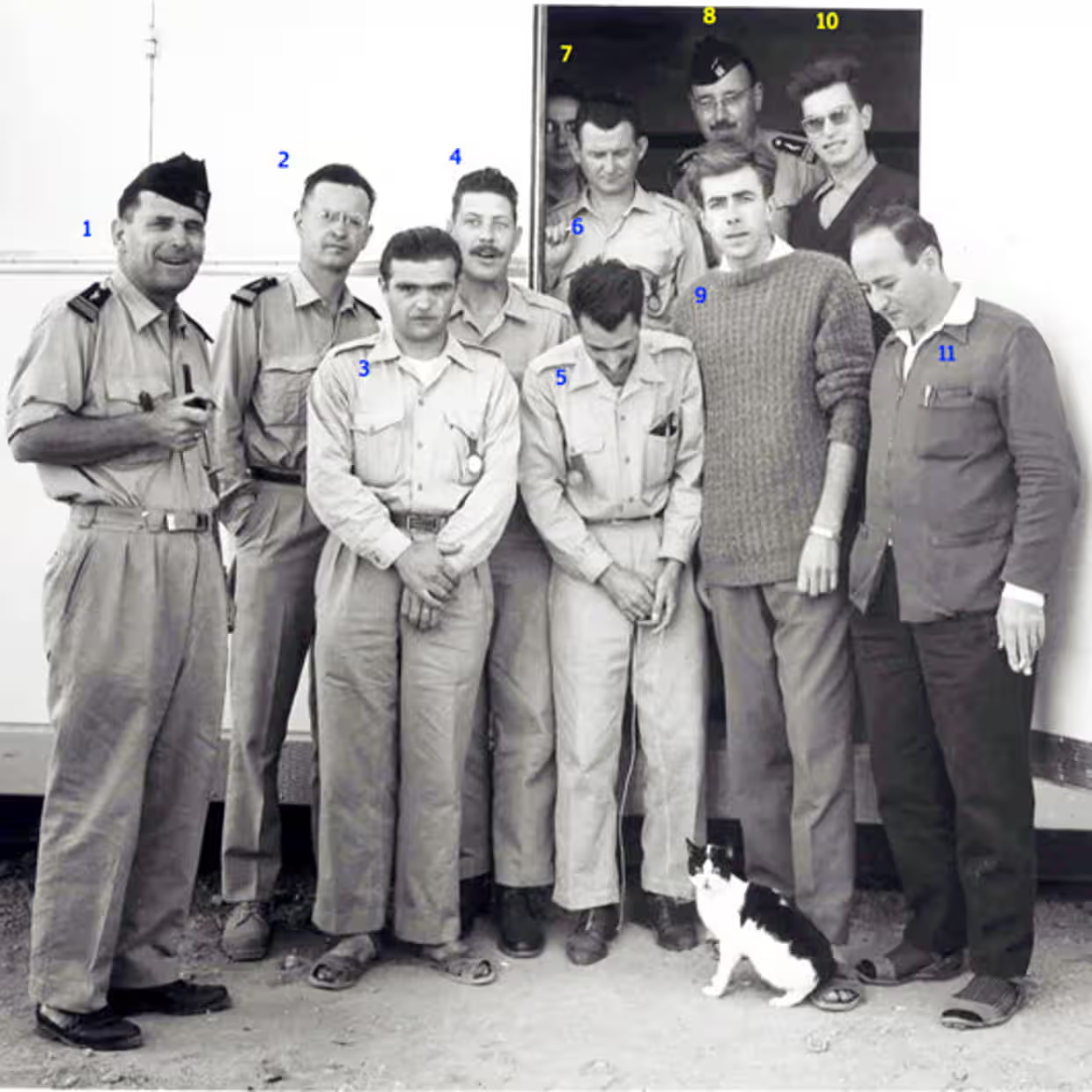
In the early '60s, dogs and monkeys were the main animals used by astronauts for research
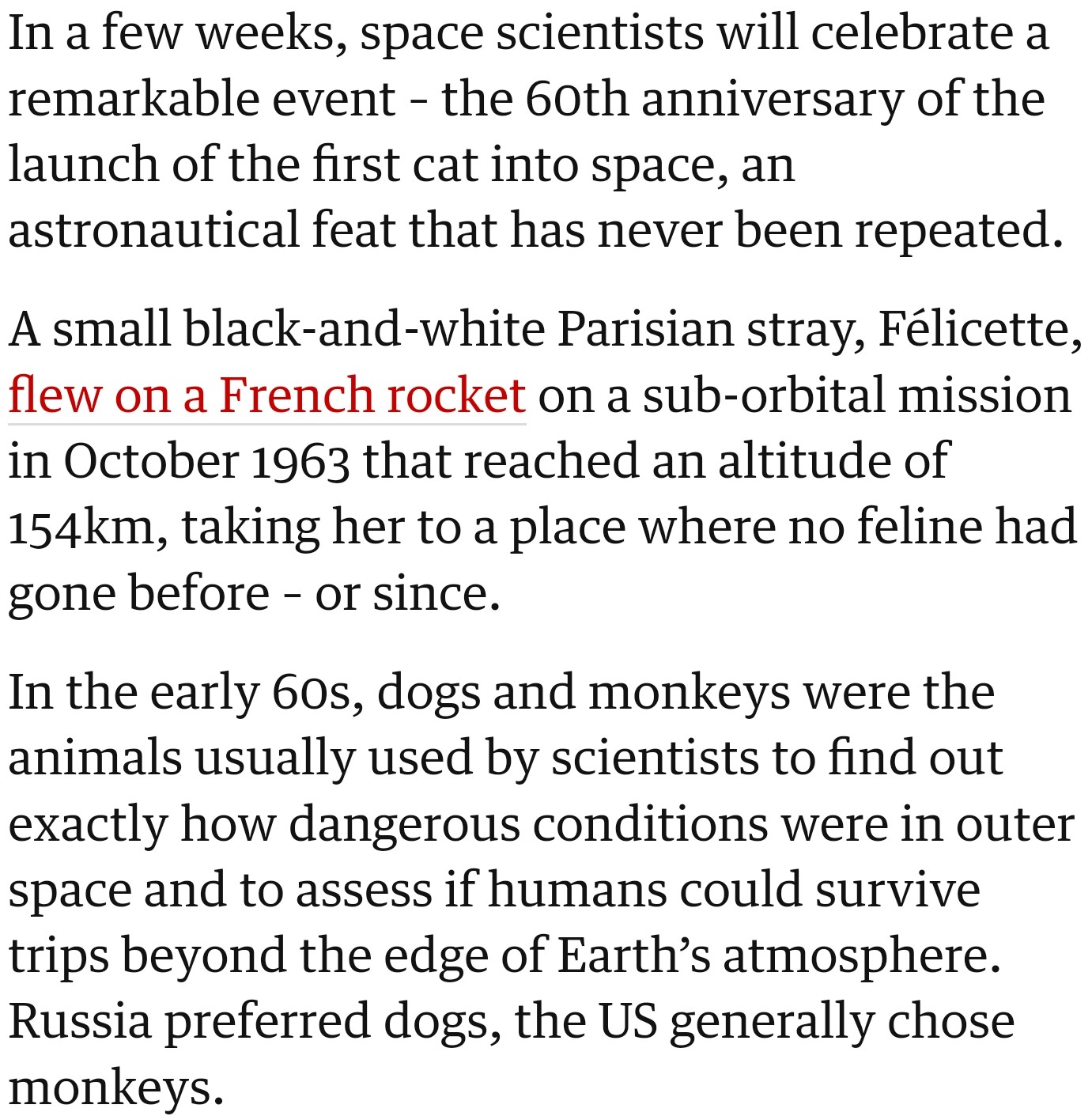
Research in the field of animal cognition shows that animals, including cats, possess intricate emotional and cognitive abilities.
According to studies published in the Journal of Comparative Psychology, animals are capable of forming complex social bonds and can experience a range of emotions similar to humans.
This understanding adds depth to the significance of Félicette's contributions to space exploration, as it raises questions about the ethical considerations surrounding animal testing in scientific research.
French scientists decided to be different. They opted for cats, instead; and Félicette was the chosen one
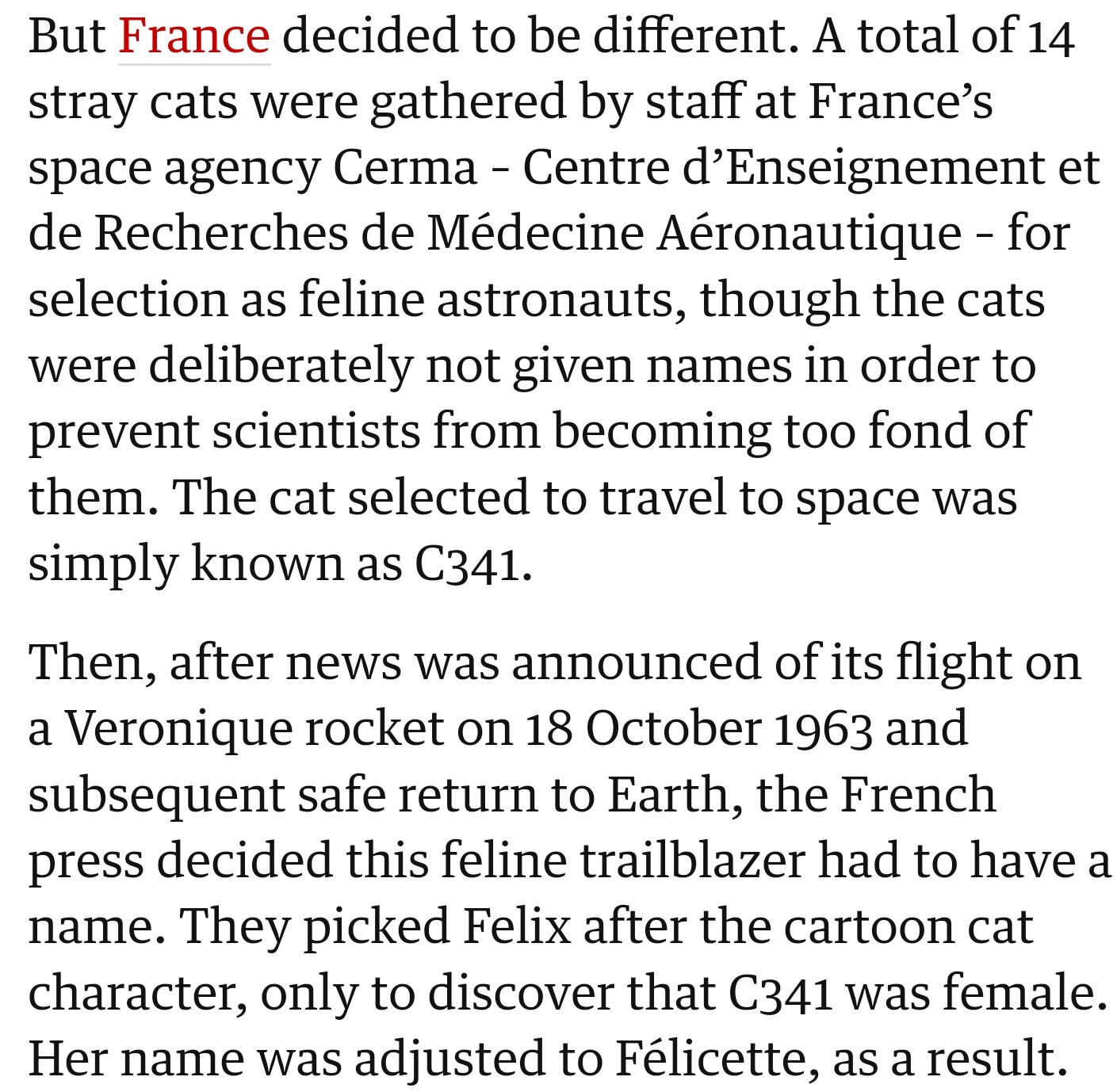
France launched Félicette into space, adding cats to the list of creatures in orbit.

The Broader Implications of Animal Contributions to Science
Félicette's journey raises essential questions about the ethics of using animals in research.
Dr. Karen Liu, an ethicist at Harvard University, emphasizes that the emotional experiences of animals must be considered when designing research protocols.
Her research indicates a growing movement towards ethical treatment and consideration of animal welfare in scientific advancements.
Over time, the list of animal astronauts has increased, from tortoises to jellyfish, etc.
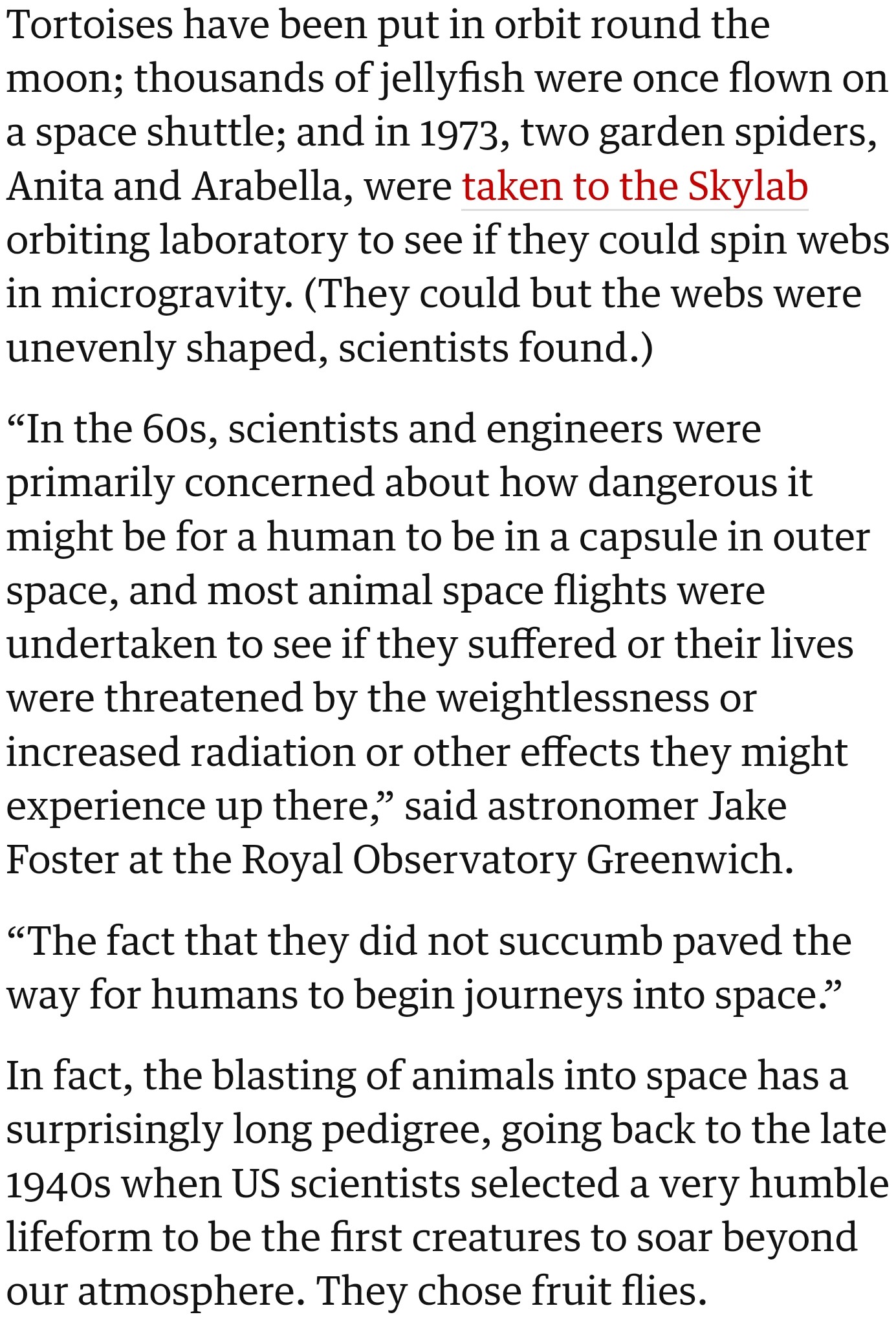
Although many animals lost their lives in the process, these early experiments helped pave the way for human space travel.

Understanding the psychological impact of Félicette's story can foster greater empathy towards animals in research contexts.
Research suggests that narratives involving animals can enhance our emotional engagement with ethical issues, promoting a more compassionate viewpoint among the public.
By sharing stories like Félicette's, we can bridge the gap between scientific progress and animal welfare concerns.
Soviet dog Laika's sacrifice helped scientists learn more about space travel and paved the way for future exploration.

The rules governing the use of animals in space experiments have gotten tougher over time
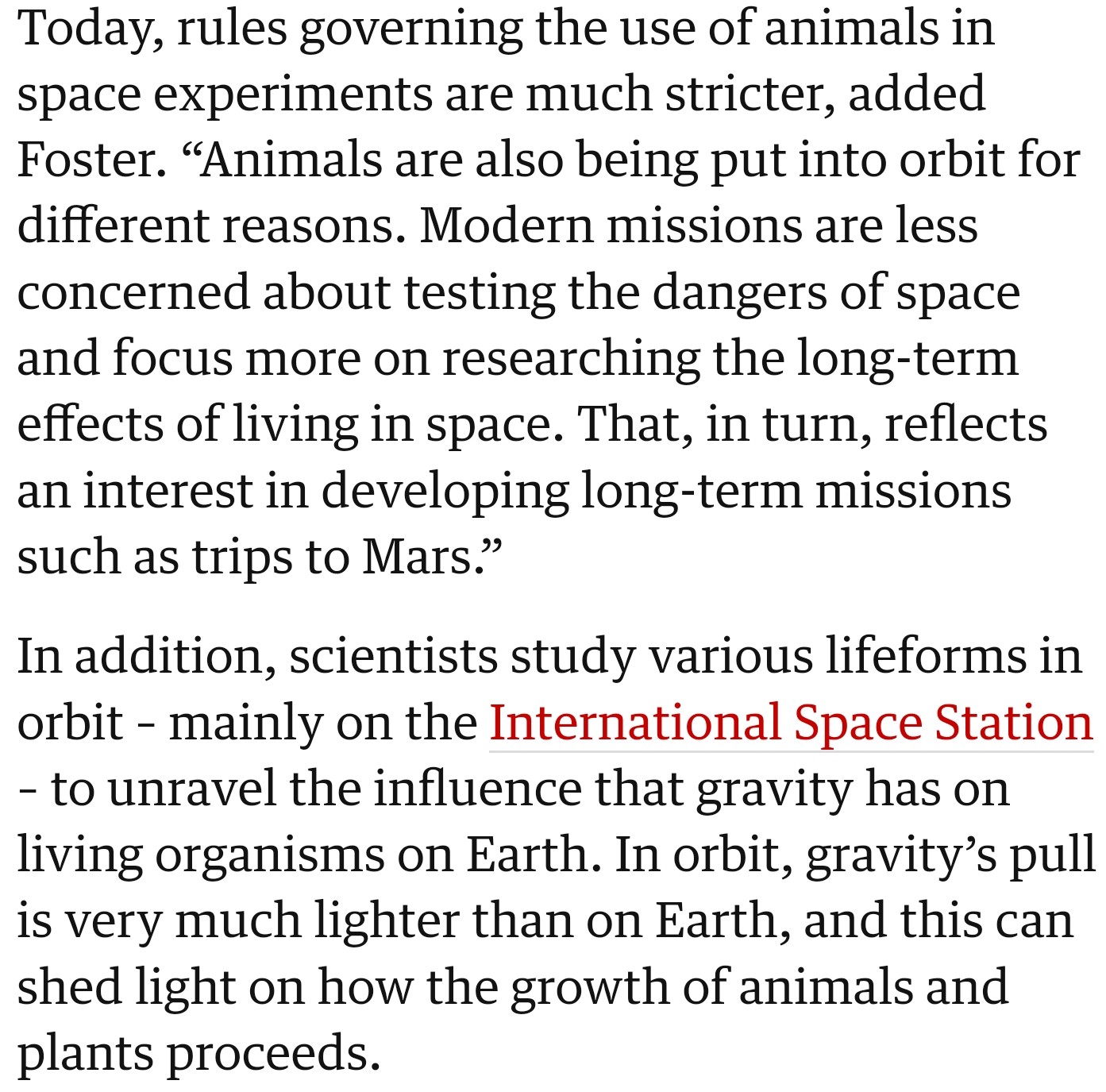
Félicette’s journey into space remains a fascinating chapter in the annals of space exploration. Despite her tragic end, her daring mission paved the way for future advancements.
Today, she is celebrated as a symbol of courage and scientific curiosity, reminding us of the extraordinary lengths we’ve gone to understand the cosmos.
Félicette, the Parisian stray, will forever be remembered as the first cat to reach for the stars.
Scientists study various lifeforms in orbit, including plants. Jennifer Buchli, a NASA scientist, notes that in space, plants grow differently because they can't sense direction.

Scientists also made comments about an astonishing organism, the tiny water bear (tardigrade) and its amazing survivability in space
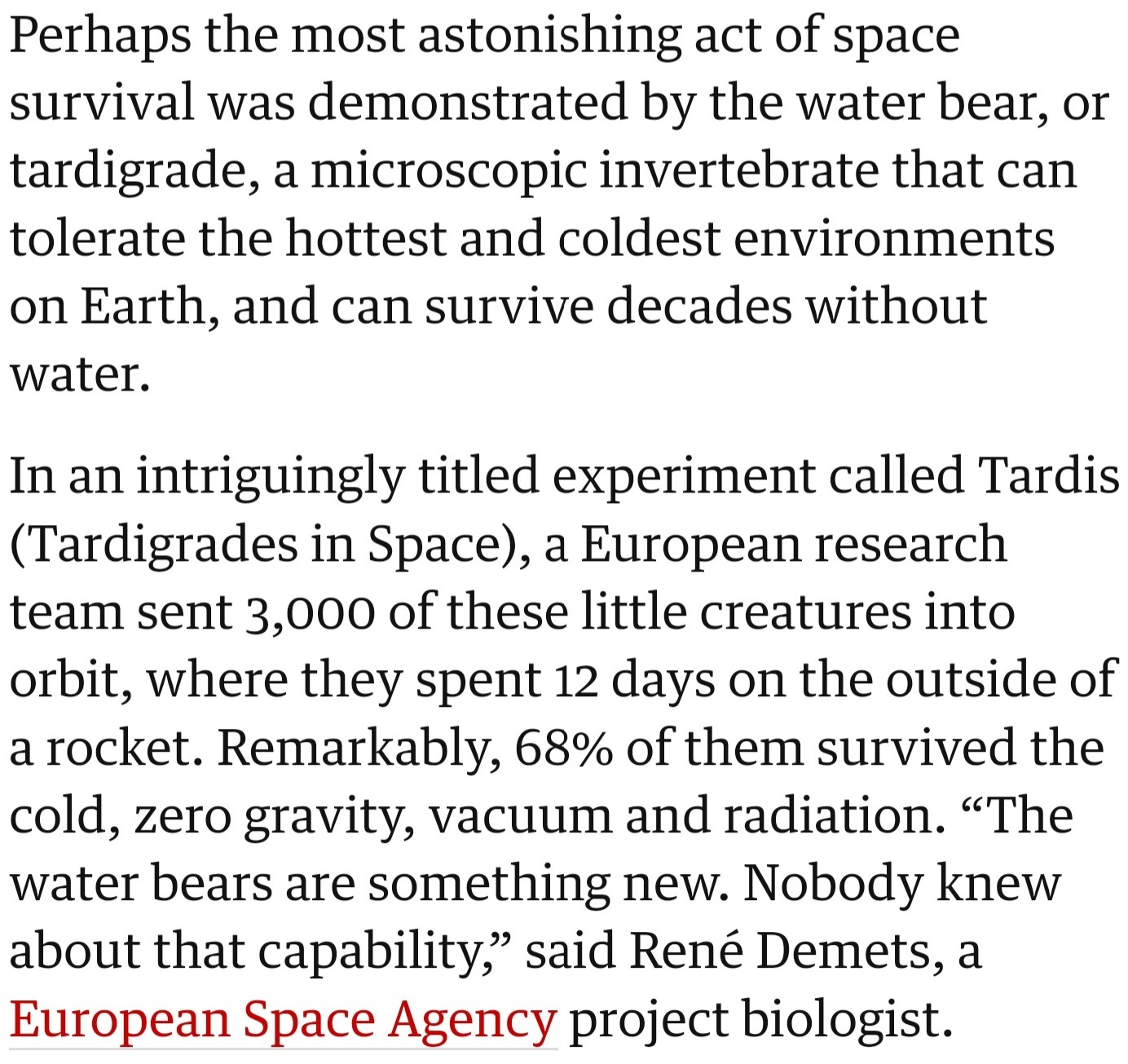
The Emotional Connections We Share with Animals
Humans often form deep emotional bonds with animals, which can influence their perspectives on research ethics.
Dr. Anna Gibbons from the University of Toronto notes that these connections can drive advocacy for more humane treatment of animals in scientific research.
Understanding these bonds can enhance public discourse around animal rights and welfare, as emotional engagement often leads to increased advocacy and awareness.
Félicette, survived the 1963 flight but was later euthanized so that scientists could study her body.
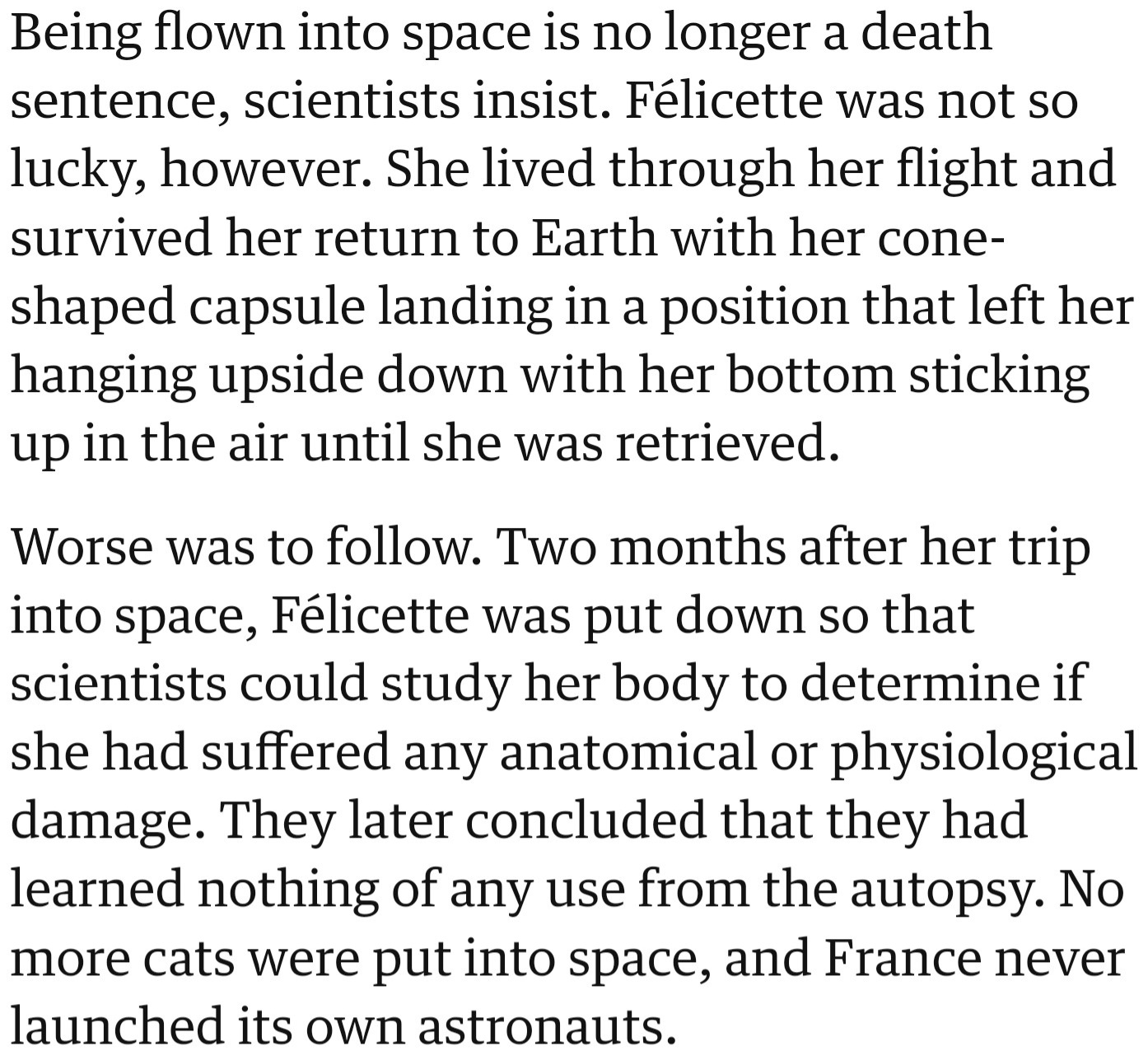
Félicette is still remembered today. A statue of her sitting on a globe, looking up at the sky, was built at the International Space University in Strasbourg in 2019.

Psychological Analysis
This story illustrates the important roles animals play in scientific discovery and highlights the need for ethical considerations in research. Recognizing the emotional connections we share with animals can deepen our understanding of their contributions and the responsibilities we have towards their welfare.
By valuing these connections, we can advocate for more humane treatment in scientific endeavors.
Analysis generated by AI
Analysis & Alternative Approaches
Félicette's journey is not just a tale of scientific exploration but a reflection of our evolving relationship with animals.
As society becomes more aware of the emotional and cognitive capabilities of animals, it prompts a re-examination of ethical considerations in scientific research.
Ultimately, fostering empathy towards animals can lead to more humane practices in research and a greater appreciation for the roles they play in our lives.
